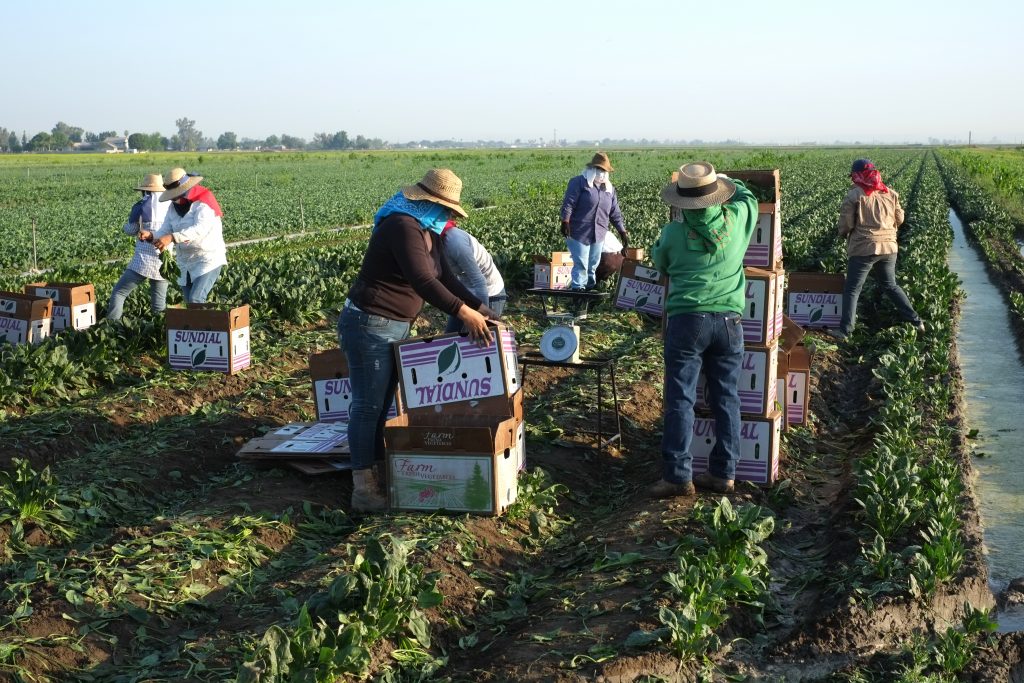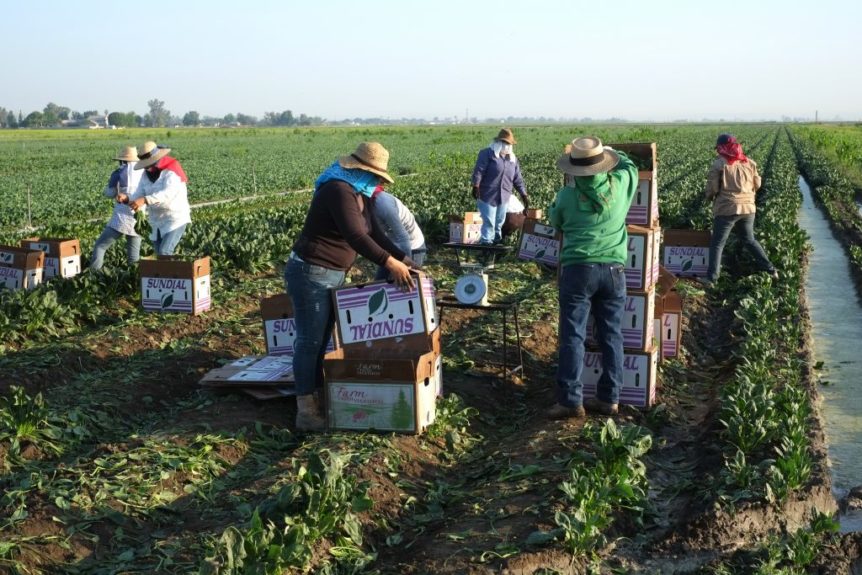By Clint Thompson
The Georgia Fruit and Vegetable Growers Association (GFVGA) cautions its specialty crop producers about participating in the U.S. Department of Agriculture’s Farm Labor Stabilization and Protection Pilot Program (FLSP Program).

The GFVGA wants growers to carefully consider what is required of their farming operations to participate in the grant program that will use up to $65 million in American Rescue Plan Act funding.

USDA photo by Tom Witham
“The Farm Labor Stabilization Program does offer the opportunity to offset costs associated with the H-2A program. We advise growers considering the program to weigh the program requirements versus the grant funds available for your operation. Some of the benchmarks for participating may require significant input from you and your staff,” the GFVGA said in an email to its members.
The new grant program is designed to address labor shortages in agriculture, reduce irregular migration through expansion of legal pathways and improve labor protections for farmworkers.
The USDA offered a webinar that further explained the program and included comments from Secretary of Agriculture Tom Vilsack.
“The truth of the matter is, farmworkers have historically been granted fewer rights than other workers in our economy. The pilot that we’re launching, we’re hoping it will incentivize employers to adopt strong labor standards and protections,” Vilsack said. “The stronger the commitments that can be made, the more competitive an application will be and the more support you’ll receive in response. This pilot will provide technical assistance to grantees to help navigate the H-2A process.”
Applications for the pilot grant program must be submitted by Tuesday, Nov. 28.
It seeks to advance the following priorities:
- Address current workforce needs in agriculture by expanding the potential pool of workers and enhancing employers’ competitiveness by improving the quality of the jobs they offer.
- Reduce irregular migration, including from Northern Central America, through the expansion of regular pathways. The program offers economic benefits for foreign workers and their families and economic opportunities for communities that send their workers to participate in the H-2A program.
- Improve working conditions for farmworkers and ensure H-2A workers are not subjected to unfair recruitment practices.
Vilsack said that the majority of H-2A workers come from Mexico, but that supply has decreased since 2010.
“Economists have projected that in order to meet demand for H-2A workers, labor sources will need to be diversified,” Vilsack said.
Eligibility for this competitive grant program is restricted to domestic agricultural employers who 1) anticipate meeting all Department of Labor (DOL) and Department of Homeland Security (DHS) regulatory requirements for the H-2A program, including demonstrated effort to effectively recruit U.S.-based workers and hire all willing, able and qualified U.S. workers; and 2) commit to, and indicate capacity to fulfill all baseline requirements, as well as any selected (supplemental) commitments that entail additive worker benefits and protections. Eligible employers include fixed-site employers, joint-employers, agricultural associations, and H-2A labor contractors.
The maximum award amount is $2,000,000 and the minimum amount is $25,000 per grant agreement (including any sub-awardees). Award amounts will be determined based on the projected number of full-time equivalent (FTE) agricultural employees, desired award level, as well as the competitive nature of the application. Consistent with the H-2A requirements, applicants must demonstrate insufficient availability of a U.S.-based workforce. The grant window for each recipient is 24 months, allowing producers to use the grant over the course of two production seasons.
More information about eligibility, the application process, and award amounts can be found at www.ams.usda.gov/flsp.
Click here to view the webinar: NCAE/USDA Webinar Recording.










